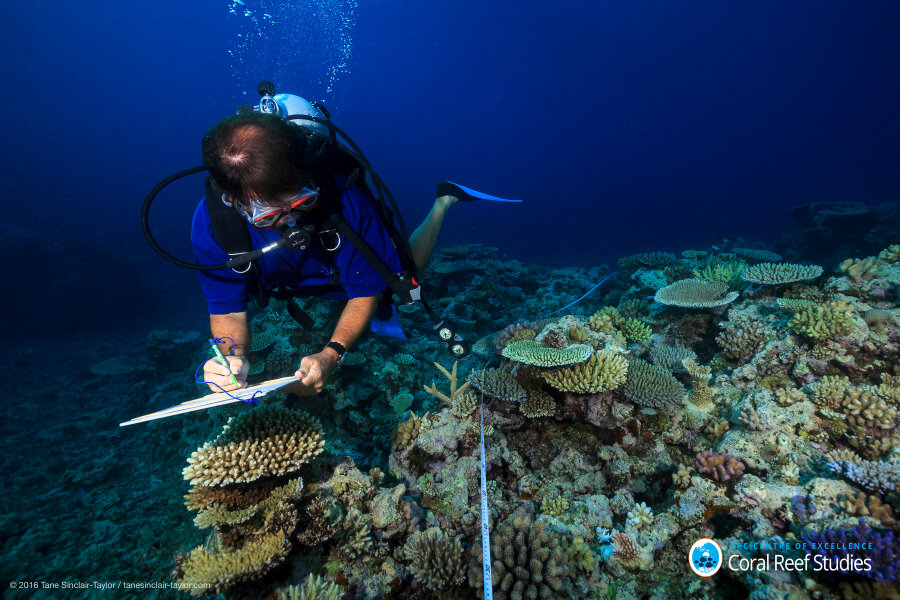Australian scientists ask tourists: Help us track the health of coral reefs
More than 2 million tourists visit the Great Barrier Reef each year. Now, Australia’s government wants snorkeling visitors to help monitor it for signs of coral bleaching.
“We have our rangers out in the Marine Park doing surveys,” Great Barrier Reef Marine Park Authority Chairman Russell Reichelt said in a press release, “but we need all the information we can get from scientists and the tourism industry to help us determine priority areas for further investigation.”
The Park Authority has even released an Eye on the Reef app for visitors to use, providing a focus for eco-minded tourists and activities for school groups.
“Citizen-science” ventures like these have also caught on in the United States, with the Audubon Society crowdsourcing bird counts and NASA asking Americans to help find exoplanets. By asking the Great Barrier Reef’s visitors to collect data on coral bleaching, Australia hopes to better inform efforts to protect the reef from climate change.
As Lonnie Shekhtman reported for The Christian Science Monitor explained last April:
Coral bleaching happens when ocean temperatures rise to a point that zooxanthellae – tiny algae that live on corals and provide them with nutrients and their radiant colors – leave their coral homes, thereby rendering coral white or "bleached." When corals go without zooxanthellae for too long, they die.
At the time of Ms. Shekhtman’s reporting, scientists had noticed widespread bleaching on the Great Barrier Reef, after the 2015-16 El Niño had warmed the area’s waters. But according to Terry Hughes, a professor at James Cook University, properly assessing the damage took several months.
"When bleaching occurs, in the 6-12-month period afterwards, the corals either survive and regain their colour, or if they don't regain their colour, they slowly die," Professor Hughes told the Australian Broadcasting Corporation (ABC) last November.
"So that's why we've had to wait seven or eight months before resurveying these reefs."
But by the end of last year, Hughes and other scientists had confirmed reports of massive bleaching. They found that the March 2016 bleaching event had killed two-thirds of coral in one 700-kilometer stretch (about 435 miles) of reef off the coast of Queensland.
The news wasn’t entirely bad. Sections farther south retained most of their coral. But rising global temperatures could increase the odds of large-scale bleaching in the future.
Andrew King, a climate scientist at Australia’s University of Melbourne, projects a 70 percent of ocean temperatures as warm as 2016’s in 2030, and a 97 percent chance in 2050. Higher temperatures, in turn, could make coral bleaching events more frequent – and harder for coral to recover.
That could not only spell the end of a natural wonder, but also have serious implications for Australia’s economy. The Australia Institute think-tank estimates that “almost 175,000 people each year” from the US, Britain, and China “are more likely to visit a country other than Australia if bleaching persists,” costing the country $1 billion (about US$770 million) per year in tourist revenue.
Scientists are clear about what needs to happen to avoid this outcome. “If we do take action, we do have some positive influence that results in a reduced chance of bleaching later in the 21st century,” Dr. King told ABC news. "We need to reduce our greenhouse gas emissions and we need to make policies that are conducive to that.”
As Australia braces for another March of unusually warm temperatures, the country’s government hopes that gathering more data on the reef can deepen scientists’ knowledge on how corals are responding to rising temperatures – and build public support for the kinds of policies needed to protect it.
“Despite the pressures of climate change, the Reef remains a place of great beauty and biodiversity – a very precious place on our planet that we need to continue to value and protect,” Dr. Reichelt said.
With the Eyes on the Reef program participants can do as little as upload photos from their underwater explorations with an app or, for those wanting to get more involved, the Rapid Monitoring Survey offers online training and an underwater slate to record the health of the coral.






